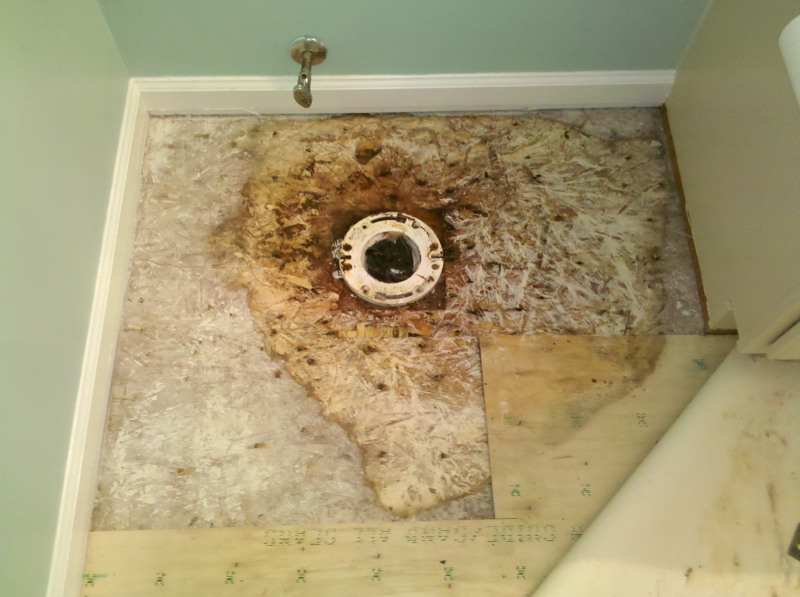The article following next involving Common Causes of Water Damage in a Bathroom is totally insightful. Give it a try and make your own results.

The bathroom is incredibly prone for wet accumulation as well as possible water damage because of the constant use water in it. This short article uses straightforward inspection methods to assist discovering water damages hazards.
The frequent use of water in the shower room makes it exceptionally vulnerable for damp build-up and also possible water damage. By examining it on a regular basis, you can minimize water associated problems.
The adhering to collection of assessments is very easy to execute and also need to be done as soon as in every 3 months in order to maintain your shower room healthy and to prevent potential water damages caused by the bath tub, the shower, pipeline joints and also plumbing, sinks, closets, and also the bathroom
Do not disregard doing these assessments as well as be extensive while performing them. Remember that these straightforward examinations can conserve you a great deal of cash by giving very early signs for water damages
Sinks and also Cabinets
Sinks and also cupboards are subjected to wetness as well as humidity everyday and are frequently neglected. Examine routinely under the sink and on the countertop over it. Fix any kind of drip in the catch as it may suggest drain troubles. Check out the sink, slow-moving draining pipelines may indicate a blocked drainpipe. Change sink seals if they are broken or loose.
Bathtub and also Shower
The shower and also tub need special focus and also upkeep. Check the tiles and also change if broken. Ensure that there is no missing cement in between the tiles. Inspect and also change broken caulking at joints where the walls fulfill the floor or the bathtub. Obstructed drains and pipelines issues will protect against the tub from drying and also might suggest serious troubles below the bathtub. Seek advice from an expert instantly to stop architectural damage. Take notice of discolorations or soft locations around the bathtub wall surfaces as they may show an interior leak.
Plumbing
Signs for water damages are hard to identify considering that most pipelines are set up inside the wall surfaces.
Pay special focus to floor covering and wall surfaces moisture and also stains as they might indicate an unseen plumbing issue. Examine wetness degrees in adjoining areas too.
The Bathroom
The commode is an at risk water junction. Examine the water lines and look for leaks around the bathroom seat, in the hose, as well as under the water tank. If you discover any indications of dampness on the floor around the commode, check for leakages in the toilet edge as well as container seals.
Be aware that hanging bathroom dish deodorants raises the chances for blockages.
Water Damage Signs In The Bathroom To Avoid Cleanup
Musty smell
This is one of the easiest signs to catch because musty smells are so odorous. The damp, earthy, moldy smell should be a big red flag. The smell will develop when moisture gets trapped in surfaces, and begins to facilitate mold growth. Leaking pipes under cabinets, inside walls, and behind shower fixtures will cause moisture to stay trapped and not dry, which will lead to mold growth and spread. As soon as you notice any musty smells in your bathroom, have it checked for hidden water damage and cleanup signs.
Visible mold
If the smell isn’t there to give it away, sometimes you will actually see mold growth. Finding mold in your bathroom is a serious problem, because mold is very harmful to your health. By the time mold growth is visible, it also means that water damage has already occurred and been present for some time. The only way the mold problem can be resolved is to find the source of the moisture and get it stopped. To safely and adequately remove mold, you need to have professionals handle the remediation. Do not waste any time in getting mold problems addressed, fixed, and sanitized so that you can protect you and your family from the many respiratory symptoms caused by mold exposure.
Damaged floors
Bathroom floors should be able to withstand some exposure to water while still remaining in good condition. However, when excess exposure or water leaks occur, they will begin to damage even the most water-resistant flooring. If you notice any cracking, bubbling, staining, or warping on your bathroom floors, there is probably a water leak somewhere causing the distortion. If you notice areas of the floor have become softer, or even have a spongy feeling, there is probably damage to the subfloor. Subflooring is typically made up of plywood. When plywood is exposed to water or moisture, it will absorb it. Once it has become saturated, the weight of the excess water will cause the wood to swell and soften. Check the floors in your bathroom frequently to catch any of these sings before they lead to damaged subflooring.
Changes on walls
When water leaks behind walls, it will cause changes in the drywall. Peeling plaster, blistering paint, and soggy wallpaper are all good indicators that excess water is building up behind the wall. Water leaking behind drywall will cause it to swell and be soft to the tough. If you start to notice gaps along the trim of your walls, or where tile meets the wall, it could also be a strong indicator that there is a leak behind the wall. Any changes, distortion, or damage on the walls should be evaluated as soon as you notice it to prevent further water damage and cleanup.

As a passionate reader on How to Prevent Bathroom Water Damage, I assumed sharing that section was a good thing. Sharing is caring. Helping people is fun. Thank you for your time. Kindly pay a visit to our blog back soon.
Book Today
 Christina Ricci Then & Now!
Christina Ricci Then & Now! Keshia Knight Pulliam Then & Now!
Keshia Knight Pulliam Then & Now! Mason Reese Then & Now!
Mason Reese Then & Now! Christy Canyon Then & Now!
Christy Canyon Then & Now! Jeri Ryan Then & Now!
Jeri Ryan Then & Now!